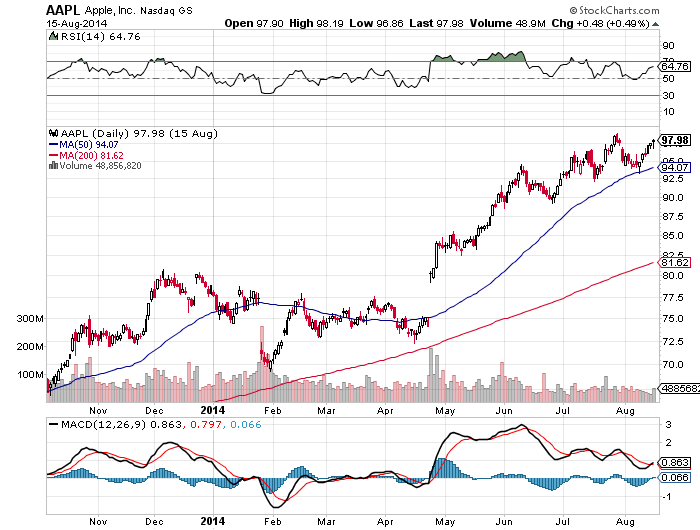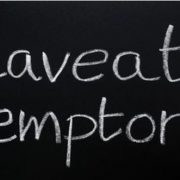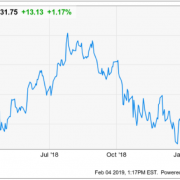For those readers looking to improve their trading results and create the unfair advantage they deserve, I have posted a training video on How to Execute a Vertical Bull Call Spread.
This is a matched pair of positions in the options market that will be profitable when the underlying security goes up, sideways, or down a small amount in price over a defined limited period of time.
It is the perfect position to have onboard during markets that have declining or low volatility, much like we experienced in 2014, and will almost certainly see again.
I have strapped on quite a few of these across many asset classes this year, and they are a major reason why I am showing positive performance numbers for 2016.
To understand this trade, I will use the example of an Apple trade, which I executed on July 10, 2014. I then felt very strongly that Apple shares would rally into the release of its new iPhone 6 on September 9, 2014.
The same play kicked in again for the iPhone 12 release last October.
So followers of my Trade Alert service received text messages and emails to add the following position:
Buy the Apple (AAPL) August 2014 $85-$90 in-the-money bull call spread at $4.00 or best
To accomplish this, they had to execute the following trades:
Buy 25 August 2014 (AAPL) $85 calls at...............$9.60
Sell short 25 August 2014 (AAPL) $90 calls at......$5.60
Net Cost:...............................................................$4.00
This gets traders into the position at $4.00, which cost them $10,000 ($4.00 per option X 100 shares per option contract X 25 contracts).
The vertical part of the description of this trade refers to the fact that both options have the same underlying security (AAPL), the same expiration date (August 15, 2014) and only different strike prices ($85 and $90).
The breakeven point can be calculated as follows:
$85.00 - Lower strike price
+$4.00 - Price paid for the vertical call spread
$89.00 - Break even Apple share price
Another way of explaining this is that the call spread you bought for $4.00 is worth $5.00 at expiration on August 15, giving you a total return of 25% in 26 trading days. Not bad!
The great thing about these positions is that your risk is defined. You can't lose any more than the amount of capital you put up, in this case, $10,000.
If Apple goes bankrupt, we get a flash crash, or suffer another 9/11 type event, you will never get a margin call from your broker in the middle of the night asking for more money. This is why hedge funds like spreads so much.
As long as Apple traded at or above $89 on the August 14 expiration date, you would have made a profit on this trade.
As it turns out, my read on Apple shares proved dead-on, and the shares closed at $97.98 on expiration day or a healthy $8.98 above my breakeven point.
The total profit on the trade came to:
($1.00 profit X 100 shares X 25 contracts) = $2,500
This means that the position earned a 25% profit on your $10,000 investment in a little more than a month. Now you know why I like Vertical Bull Call Spreads so much. So do my followers.
Occasionally, these things don't work and wheels fall off. As hard as it may be to believe, I am not infallible.
So, if I'm wrong and I tell you to buy a vertical bull call spread, and the shares fall not a little, but a lot, you will lose money. On those rare occasions when that happens, I'll shoot out a Trade Alert to you with stop-loss instructions before the damage gets out of control.
That stop loss is usually at the lower strike price when there is still a lot of time to run to expiration, as the position still has a lot of time value remaining, and the upper strike price when there are only a few days left until expiration.
The most I have ever lost on paper with one of these vertical bull call spreads was 50% of my capital, or $5,000 on a $10,000 investment. That’s because the trade was with both long and short options which maintain time value, no matter what the market does. I also never put more than 10% of my portfolio into a single position, so the paper loss on the entire capital was only 5%.
But that was on one of the worst days in market history when the Dow Average opened down 1,300 points. As it turned out, I kept my position and ended up making the maximum profit by expiration day.
To watch the video edition of How to Execute a Vertical Bull Call Spread, complete with more detailed instructions on how to execute the position with your own online platform, please click here.






